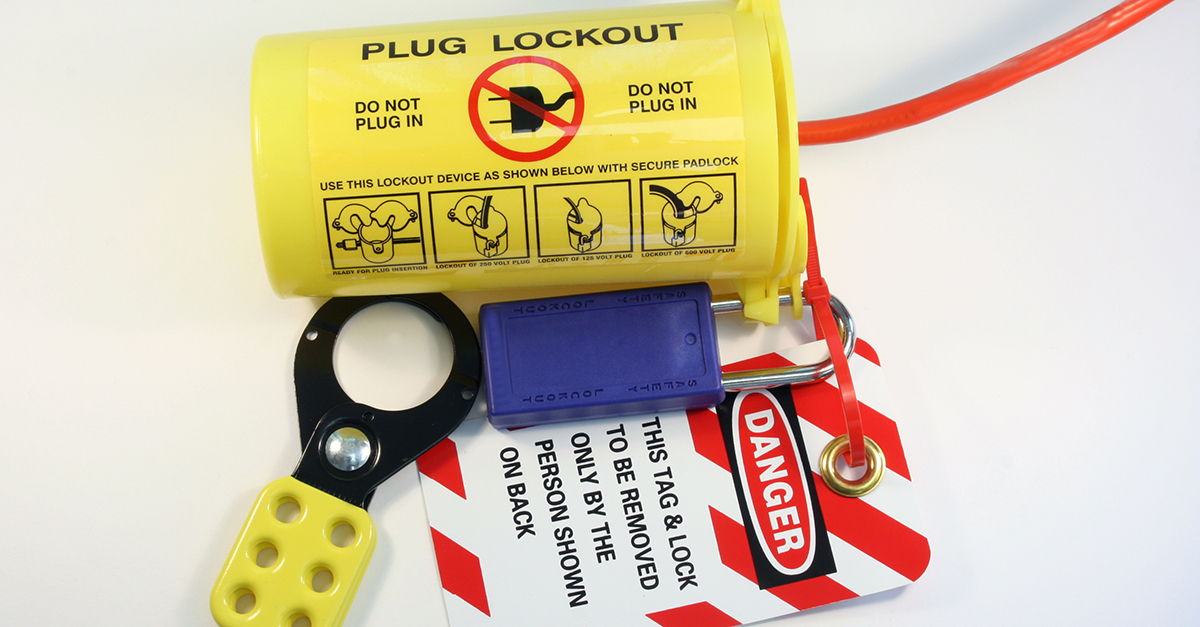There are hazards involved in cleaning any space, ranging from slip, trip, and fall possibilities to repetitive stress injuries. However, some locations present additional dangers, such as manufacturing areas with machinery that can emit hazardous energy.
If your cleaning crews are servicing these areas, they need to protect themselves against the accidental release of energy. An understanding of the lockout/tagout standard will help protect them from electrocution, burns, amputations, fractures, and other injuries that can result from accidental energy release.
Prevent accidental energy release
Lockout/tagout is another name for the U.S. Occupational Safety and Health Administration (OSHA) standard for The Control of Hazardous Energy. This standard addresses the practices and procedures necessary to disable machinery or equipment to prevent the release of hazardous energy while employees perform servicing and maintenance activities. The standard outlines measures for controlling electrical, mechanical, hydraulic, pneumatic, chemical, thermal, and other energy sources.
According to recommendations from the National Institute for Occupational Safety and Health (NIOSH), lockout/tagout standards apply in the following situations:
- When workers are servicing and maintaining equipment, and there is a possibility of unexpected startup of the machine or release of stored energy
- When workers must remove or bypass a guard or safety device during normal production
- When workers place any part of their body into the danger zone or near the machine’s point of operation.
According to the OSHA standard, facilities that contain energy-releasing equipment are required to:
- Develop, implement, and enforce an energy control program
- Use lockout devices for equipment that can be locked out
- Use tagout devices in place of lockout devices only if the tagout program offers worker protection equivalent to that provided through a lockout program
- Ensure that new or overhauled equipment is capable of being locked out
- Establish a policy that permits only the worker who applied a lockout/tagout device to remove it
- Provide effective training as mandated for all workers covered by the standard.
- Comply with the additional energy control provisions in OSHA standards when machines or equipment must be tested or repositioned, when outside contractors work at the site, in group lockout situations, and during shift or personnel changes.
Contractors must proceed with caution
As the last requirement above indicates, extra precautions are necessary when outside contractors are on site. Jason Lamonica, chief operating officer (COO) of staffing company Spec on the Job, listed several reasons to lock out machinery. “It may need a repair or be underperforming. Or maybe there’s a safety concern and someone was injured on the equipment,” he said.
Despite the necessity for precautions, Lamonica said he has seen incidents occur when workers have not properly identified and shut down malfunctioning equipment. “People get hired, but are not well-versed on the company’s procedures in lockout/tagout,” Lamonica said. “After a machine has been locked out, I’ve seen situations when workers don’t properly test it to make sure it is isolated from the power source. I’ve seen where they have turned off the wrong electrical source.”
When machinery is not shut down using proper lockout/tagout procedures, people in the vicinity, including contract cleaners and maintenance workers, can sustain injuries if they come in contact with the equipment, either inadvertently or while intending to clean or repair it.
Lamonica notes that facilities may have different methods of isolating machinery from outside contractors. “It’s typical for every place to have their own procedures. They may put up cones, signs, or barriers,” he explained.
Include all workers in safety training
Frequent training for all employees is the most reliable method to ensure that in-house workers properly lock out machinery and that contract workers don’t touch it.
“If it goes back to anything, it’s training from day one,” said Lamonica.
Results of NIOSH fatality investigations indicate that the following steps are particularly important to assist with training and keep workers safe:
- Be sure that workers have a clear understanding of when hazardous energy control procedures apply and training on how to properly apply the procedures
- Develop procedures on lockout/tagout that are specific to each machin
- Clearly label isolation devices, such as breaker panels and control valves
- Ensure that all employees who operate or work with the machine, as well as those in the area where service or maintenance is performed, know that the lockout or tagout devices have been removed and that the machine is capable of being reenergized
- Ensure that no one under the age of 18 works on machinery declared hazardous in the federal child labor provisions of the Fair Labor Standards Act
- Ensure that workers receive training in their primary language.
“It’s also vitally important to document near misses,” Lamonica said. “Note instances where people didn’t follow protocol and make necessary changes.”




